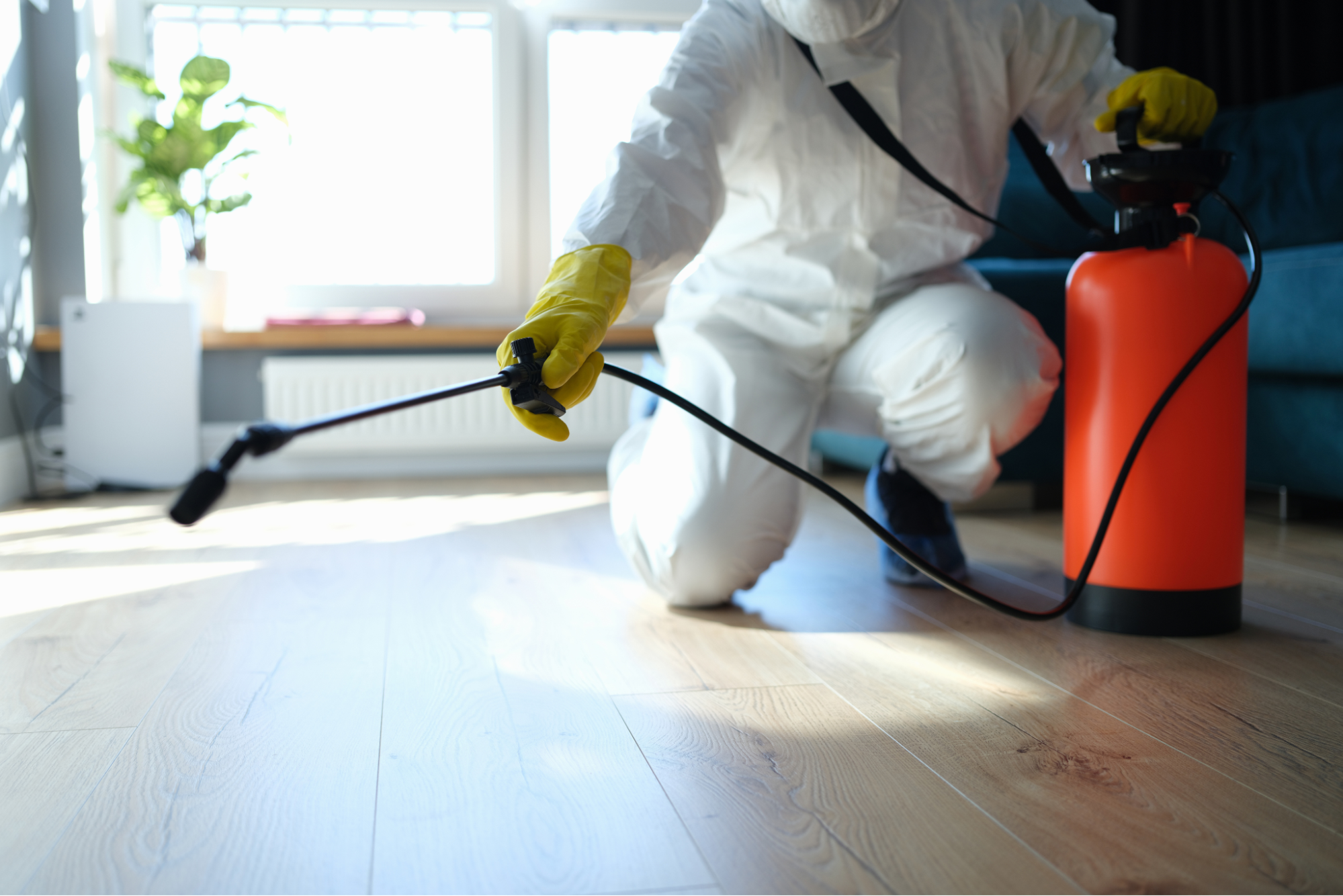A1 Bed Bug Exterminator Charlotte - Specialized Bed Bug Elimination
A1 Bed Bug Exterminator Charlotte - Specialized Bed Bug Elimination
Blog Article
Bed Insect Therapy Malfunction: Contrasting Chemical Vs. Non-Chemical Solutions
In the realm of pest control, specifically when handling the consistent concern of bed pests, the choice in between chemical and non-chemical therapy remedies can be a pivotal one. Both methods offer distinct benefits and disadvantages, affecting variables such as performance, safety considerations, and general price. By examining the nuanced details of each technique, a more clear understanding of which path to go after in dealing with a bed insect infestation can be obtained.
Effectiveness of Chemical Therapies
Chemical treatments for bed bug infestations have been widely recognized for their quick and potent effectiveness in eliminating these bugs. When taking into consideration the efficiency of chemical treatments, it is crucial to recognize that they can offer a thorough and fast option to a bed bug issue. Specialist pest control operators often depend on pesticides to target bed insects at various phases of their life cycle, including eggs, adults, and fairies. These chemicals normally work by interrupting the bed insects' nerve system, bring about paralysis and eventual fatality.
Furthermore, chemical therapies have the benefit of supplying residual impacts, meaning that they can remain to eliminate bed insects also after the preliminary application. This recurring activity is particularly advantageous in combating any prospective re-infestations. In addition, the rapid activity of chemical therapies can bring relief to individuals encountering severe bed insect infestations, enabling them to gain back control of their living rooms promptly.
Safety Interest In Chemical Solutions
One crucial facet that requires mindful consideration when using chemical remedies for bed pest therapy is ensuring the safety and security of residents and the atmosphere. Direct exposure to certain chemicals utilized in bed bug therapies can lead to respiratory problems, skin irritability, or other negative reactions, especially in individuals with pre-existing problems or level of sensitivities.
Additionally, the environmental impact of chemical options is one more significant consideration. Some pesticides used in bed bug treatments may be unsafe to helpful insects, wildlife, and ecosystems if they leach right into the dirt or water systems. It is important to make use of chemical treatments deliberately, complying with security guidelines, and thinking about less poisonous options to minimize these threats and guarantee the safe and effective management of bed bug invasions.
Advantages of Non-Chemical Methods
Taking into consideration the possible security issues and environmental influence linked with chemical remedies for bed insect treatment, exploring non-chemical approaches presents an encouraging alternative with a number of distinctive benefits. Non-chemical techniques offer a more secure alternative for houses, especially those with youngsters, pets, or individuals delicate to extreme chemicals. These approaches remove the threats of exposure to hazardous compounds, reducing the possibility for negative health results. Furthermore, non-chemical therapies are eco-friendly, as they do not add to air or water contamination, making them a lasting selection for insect control.
In addition, non-chemical options can be efficient in targeting bed insects, consisting of hard-to-reach locations where chemical treatments may not penetrate - A1 charlotte bed bug exterminator. Techniques such as heat treatment, vacuuming, vapor cleansing, and bed mattress encasements offer extensive obliteration without the use of unsafe chemicals.
Limitations of Non-Chemical Treatments

Additionally, non-chemical therapies check my site commonly call for numerous applications to attain successful eradication. This can be time-consuming and might not always ensure total removal of all bed insects and their eggs, specifically in hidden or hard-to-reach places.
Furthermore, the success of non-chemical therapies heavily relies on appropriate application and thoroughness, which can be challenging for people without expert knowledge. Insufficient application of non-chemical methods might result in incomplete elimination, bring about consistent infestations and the requirement for extra treatments.
Therefore, while non-chemical therapies have their advantages, it is necessary to recognize these limitations and consider them when identifying one of the most efficient strategy for managing bed pest invasions.
Price Contrast: Chemical Vs. Non-Chemical Options
Given the constraints related to non-chemical therapies, a necessary aspect to evaluate in the context of bed bug management is the price contrast between chemical and non-chemical alternatives. Chemical treatments normally entail the application of pesticides by specialists, which can range from $250 to $900 per room, relying on the seriousness of the infestation and the size of the location to be dealt with. In contrast, non-chemical treatments like warm therapy or vapor can be a lot more expensive, with expenses varying from $1,000 to $6,000 for an entire home. While the first cost of chemical therapies may seem lower, several treatments might be required to fully remove the invasion, possibly enhancing the total price. On the various other hand, non-chemical alternatives might give an extra environmentally friendly and sustainable solution, although they can be cost-prohibitive for some individuals. Eventually, when taking into consideration the expense of bed insect treatment alternatives, it is necessary to weigh the ahead of time costs against the performance and long-term sustainability of the selected technique.
Final Thought

Taking into consideration the prospective safety concerns and ecological impact associated with chemical remedies for bed insect treatment, exploring non-chemical strategies offers an appealing option with several distinct benefits.Offered the limitations linked with non-chemical therapies, an important element to examine in the context of bed insect administration is the cost contrast find more info in between chemical and non-chemical options. In contrast, non-chemical treatments like heat therapy or vapor can be much more pricey, with prices ranging from $1,000 to $6,000 for a whole home. While the first expense of chemical treatments may seem lower, numerous therapies may be needed to fully eliminate the infestation, possibly boosting the total cost.In find out this here conclusion, when comparing chemical and non-chemical bed bug therapy alternatives, it is necessary to consider effectiveness, safety and security, benefits, limitations, and expense.
Report this page